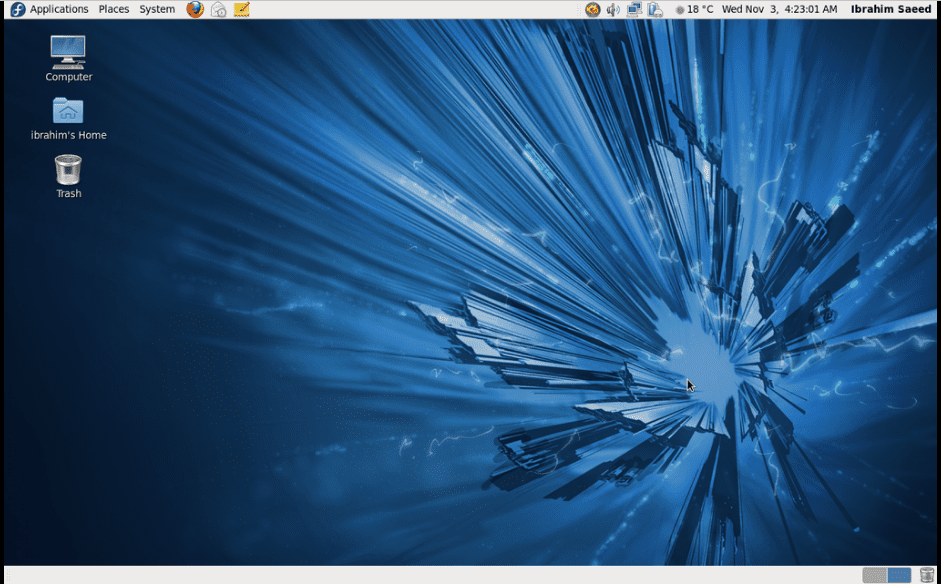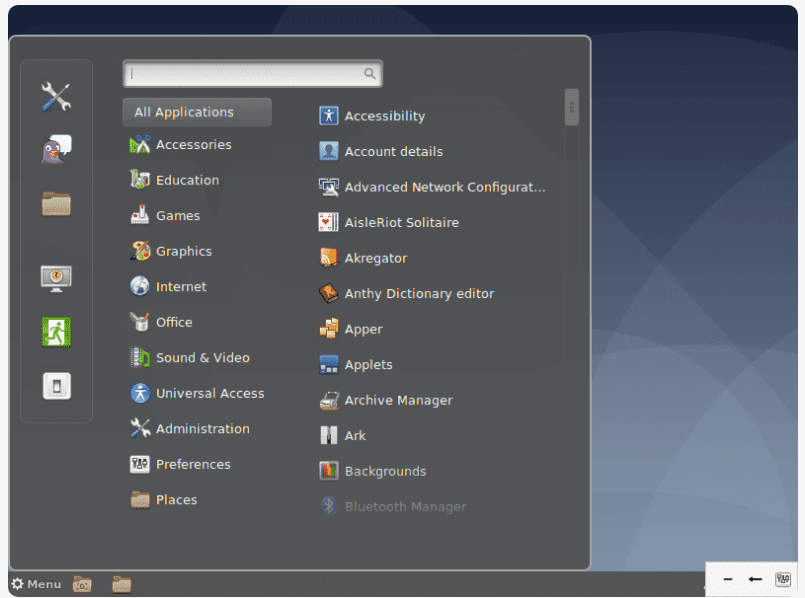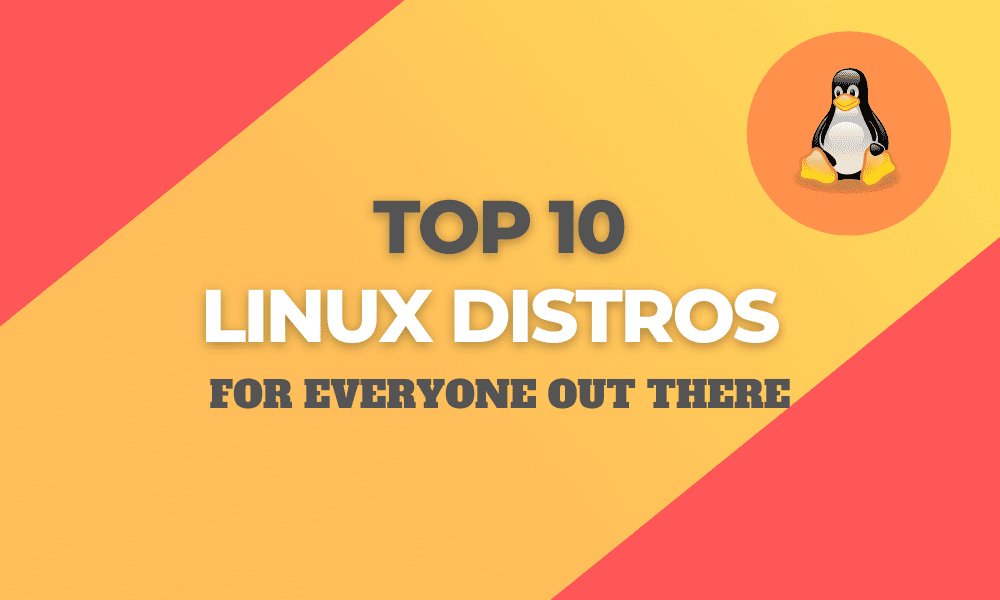The open-source and price-tag free attributes of the Linux operating system continues to be a blessing in disguise. The name Linux is a household name that holds numerous Linux distributions or distros. The existence of these distros makes it flexible enough to accommodate operating system users with different skill sets. Therefore, you no longer have to acquaint with the Linux operating system as a security-based software only.
These distros continue to attract an increasing number of community users who are embracing the dynamic applicability of the Linux OS, which is turning out to be more than just a security-centered software. From a desktop to an enterprise environment, Linux gives its community users a reason to stick around regardless of whether you have an unmatched set of IT skills or are just a passerby looking for a new OS home.
Top Linux Distros for Everyone
The year 2020 is on the brink of permanent extinction. Therefore, it is appropriate to introduce you to the top trending Linux distributions you should consider mastering from the onset of 2021. The generated list of these Linux distros takes a unique approach in its presentation. It fuses the developers’ rankings of these Linux distros and also the community users’ rankings.
Therefore, this article’s outcome is a balance between the Linux distros’ developers’ perspective and the Linux community’s users’ perspective. The article outputs Linux distros rankings based on a commonality or balanced vote count from the mentioned user perspectives.
10. OpenSUSE

OpenSUSE Linux Distro
This distro project is characterized as both modern and community-based. It converges into two main SUSE branches: SUSE Tumbleweed and SUSE Leap. SUSE Leap caters to enterprise development users and desktop users. Enterprise developers find it effective for software application testing purposes. Therefore, system administrators and open-source developers consider the SUSE Leap as an ideal Linux distro. SUSE Tumbleweed equips itself with the latest IDEs and software stacks. It avails its users with up-to-date packages like the kernel, office applications, and GCC compiler. Moreover, the package manager available on OpenSUSE distro is Yast. This attribute makes it easier for users to access the needed software packages and applications, which further qualifies this Linux Distro for system administrators and software developers. If OpenSUSE speaks your language, you can access and download it from this link.
9. Arch Linux

Arch Linux Distro
The Arch Linux distro is geeky in its design and performance. It is also lightweight and flexible. This distro is recommended for advanced Linux users who know their way around the OS or Linux experts that have no trouble bending the rules of the OS. Therefore, if you only care about the running services or installed applications, you will call Arch Linux your home. The distro does not care too much about the UI, and if you are migrating from a UI-rich OS like Windows, you might struggle at first before you get a grip of how to use this system comfortably. We can present the functional and structural ideology of Arch Linux to be the same as a plain piece of paper. The same way you can fold this paper to adapt to a new structure is the same freedom Arch Linux presents to its users. They can make the needed custom system configurations to suit their preferences. Therefore, such configuration prowess is only applicable to an advanced user or a user that can comfortably navigate through the Ins and Outs of a Linux OS.
Arch is described as a rolling release. This statement implies that this OS can be updated to its newest version from the system terminal. This update mostly caters to the packages needed to make its operations smooth and efficient. The package manager available on Arch Linux is Pacman. It gives its users access to the Arch User Repository (AUR) to upgrade the OS and update the installed software packages. If you want to give Arch Linux a try, you can download it from this link.
8. Kali Linux

Kali Linux Distro
Offensive security is the developer and maintainer of this awesome Linux distro. This distro is also Debian-based. The primary objective behind the design and development of Kali Linux was to have a Linux system that was flawless in handling digital forensics and network penetration testing. Kali Linux will be their better half for users who have a thirst for testing their hacking skills. It comes pre-configured and pre-installed with all the needed network testing and penetration tools you might need on your hacking adventure. Such out-of-the-box tools include Maltego, Metasploit Framework, Aircrack-ng, and Nmap, among others. The students of penetration testing and Cybersecurity find the likes of these mentioned tools useful. Moreover, this is not just your ordinary Linux operating system. Mastering Kali creates a doorway to awesome career opportunities in Cybersecurity. It is certifiable through its provision of industry-standard certifications. Such certifications include Kali Linux Certified Professional and Penetration Testing with Kali. Impactful documentations and ebooks on Kali Linux and its mastery already exist on the web. This distro makes use of the APT package manager. If you feel the vibe of Kali Linux, you can download it from this link and get its installation instructions from this link.
7. Fedora

Fedora Linux Distro
The user-friendly design and system architecture of Fedora contributes to its reputation of being a social OS, meaning it is easy for any user to make acquaintance with this system. The distro is packaged with a simple design architecture to ease system navigation and out-of-the-box applications, which have useful features that contribute to its performance longevity. Therefore, a newcomer entering the Linux universe will feel right at home.
This OS’s power and flexibility make its functionality comfortably applicable to Laptops & desktops, IoT ecosystems, and servers. Red Hat created the foundation for the development of Fedora. Therefore, the foundation created for Fedora by Red Hat makes it a perfect testing environment for developing applications and services that want to transition into the Enterprise phase. This solid reason makes Fedora a priceless gift for students and developers who want to learn application development or test already developed applications.
The package manager attached to this reputable Linux distro is the defaulted DNF package manager. This package manager is praised for its contribution to the avail of updated and reputable RPM software packages. If you want to give Fedora a try, you can download it from this link.
6. CentOS

Centos Linux Distro
This Linux distro is community-driven. This statement implies that it is the members of the CentOS community that control the traffic of its development, maintenance, and when to release newer and stable OS versions. The software developmental objective of Centos OS is to enable the delivery of an open-source ecosystem that is reliable and robust. RHEL takes credit as the developmental basis for Centos. Therefore, RHEL makes Centos an ideal alternate option to the operating systems under Red Hat Enterprise Linux. It is because this distro is not commercialized but can accommodate similar performance features. Therefore, its download and installation are straightforward. Centos users benefit from the stable and reliable attribute this distro inherits from RHEL. They reap the benefits of free features and security updates. If you are an enthusiast of what RHEL offers this distro, you should consider giving it a try. The repositories bound to this distro are BaseOS and App Stream. Therefore, your download of Centos OS will be shipped with up-to-date software packages like GCC, Python, and Maven. If your Linux OS interests seem to coincide with Centos OS, you can access and download it from this link.
5. Red Hat Enterprise Linux

Red Hat Enterprise Linux Distro
The abbreviation RHEL denotes this Linux distro. The functional and design objective of RHEL makes it a stable candidate for commercial and enterprise industrial applications. If you are looking for an alternative to the likes of Microsoft and other proprietary systems, then RHEL is the better substitute. It’s RHEL’s open-source nature that makes it a better candidate. The users that prefer this distro are the ones used to interacting with multiple server environments. It is because of the overall security RHEL portrays; attributed to the regular security patches it receives.
The setup and configuration of RHEL can be on the Cloud, virtual environments like HyperV and VMware, and physical servers. Moreover, if you are interested in pursuing and mastering containerization technology, this distro perfectly adapts to this technological segment. However, RHEL’s adaptation would not be possible without OpenShift PaaS. It is a hybrid cloud environment befitting the characterization platform as a service. Understanding this technology requires that you have Docker and Kubernetes installed and configured on your RHEL distro. Kubernetes will facilitate the automation processes involved in scaling, deployment, and management of your RHEL distro. It manages Docker, a fragmented breakdown of software packages that isolate and execute separately but can still communicate if there is a well-defined channel.
This Linux distro is also certifiable. Therefore, with the appropriate training, you can certify yourself as an RHEL system administrator through the Red Hat Certified Engineer (RHCE) and Red Hat Certified System Administrator (RHCSA) courses, among others.
Your choice to use RHEL should solely rely on OS objectives such as stability, security, and efficiency. The accessibility, installation, and use of RHEL demands that you adhere to its subscription-based rule. Once you agree to this OS subscription plan, you will have to renew it annually. Moreover, the OS subscriptions tied to RHEL are presented in models. You can choose whether your subscription will be based on Linux for Virtual Datacenters, Linux Developer Suite, or Linux Developer Workstation.
In terms of the supported package manager, Red Hat used to rely on Yum. However, since RHEL 8, the package manager changed to DNF, which is the current default. BaseOS and AppStream are the primary repositories responsible for its availability to the user communities. The BaseOS repo is responsible for applications that prioritize the system’s core functionality. The AppStream repo is responsible for the general software applications. These software applications are not pre-installed as the OS can survive without them. However, your user demands on the OS need the assistance of these software applications, and that is why the AppSteam repo is important. Since Red Hat is not freeware, you can, however, take advantage of its free trial package. Download it from this link.
4. Linux Mint

Linux Mint Distro
With a strong basis on Ubuntu, the growing popularity of Linux Mint speaks for itself. Since it is a community-driven distro, the elegance in the design and development of its desktop environment makes it a favorite user-friendly OS among professionals and desktop users. We can characterize Mint as an outstanding, powerful, and stable Linux distro.
The Mint 20 distro release dropped its default Snap support. However, re-enabling the Snap support will require some basic knowledge and mastery of using the OS terminal. The following command sequences should lead to the re-installation and re-configuration of Snap.
tuts@FOSSlinux:~$ sudo rm etc/apt/ preferences.d/nosnap.pref tuts@FOSSlinux:~$ sudo apt update tuts@FOSSlinux:~$ sudo apt install snapd
Applications whose executions can only take place inside a sandbox defines a Snap. For these applications to access the host system’s resources, a mediated access request has to occur. Ubuntu 20.04 LTS is the developmental inspiration behind Mint 20, the current distro version. Therefore, this Mint version is packaged in three unique desktop versions: XFCE, Cinnamon, and MATE. Mint’s current release requires that the user machines for its installation be 64-bit architectures since it nullified its support for the 32-bit system architectures. The current version is powered by the Linux kernel 5.4. Therefore, its users should expect NVIDIA GPU, Intel Tiger Lake CPU, and AMD Navi 12 support. The revamp of its UI retouched its taskbar, added new themes with polished icons, and implemented additional support for high-resolution background photos.
In terms of new features, Linux Mint is inclusive of a file-sharing program called Warpinator. It is useful in a LAN environment. Its HiDPI display has an improvised fractional scaling feature. Therefore, the images you interact with within this environment will be crisp and sharper. It is also pre-packaged by defaulted useful applications like LibreOffice, Firefox, Thunderbird, Audacious music player, and Timeshift. This go-to Linux distro also supports gaming and day-to-day desktop tasks. Since Mint 20 is under LT or Long Term release, expect to reap from its community support until 2025 when another version might pop up. If you need a tutorial on the installation of Linux Mint, check out this article.
You can download and install Linux Mint from this link.
3. Ubuntu

Ubuntu Linux Distro
This distro name is familiar to most OS users whether they have engaged with Linux or not. Canonical are its creators and maintainers. Ubuntu’s popularity across the OS universe makes it a reputable and enjoyable Linux distro for professionals, intermediate users, and beginners. Therefore the Ubuntu philosophy makes it the jack of all trades since a user with any OS experience level can swiftly make it their favorite OS. It is the perfect OS for transitional users or beginners looking for a different taste in the OS universe from other systems like Mac and Windows.
Ubuntu defaults with the Gnome desktop environment, which supports out-of-the-box applications like LibreOffice, Firefox, Gimp, Rhythmbox, and Audacious. These apps cover the basic user support of an OS.
Ubuntu 20.04 LTS is the latest distro version in this category, with the codename Focal Fossa. It is packaged with awesome features and numerous improvements. Its Yaru theme presents its users with lots of polished icons. If you are looking for a distro with stable support for snap packages, you should consider Ubuntu. Moreover, its high-resolution displays take credit for Ubuntu’s fractional scaling functionality.
Ubuntu mirrors other Linux distributions’ developmental inspiration like Linux Mint 20.04 LTS, Kubuntu 20.04, and Lubuntu 20.04 LTS. If you want to understand Linux through a User-friendly yet dynamically complex distro, you should start with Ubuntu. You will get lots of default apps that meet your user needs.
Moreover, for the users after a creative distro, Ubuntu is not a technical skeleton. It’s worth noting that Ubuntu Studio is exclusively purposed for multimedia production. Therefore, creative users can access a Linux distribution that solely caters to their audio, video, photography, and graphics production careers.
2. Gentoo

Gentoo Linux Distro
This distro might sound like a new name to this list, but it has earned this top spot because of its performance reputation. Gentoo distro is a strong favorite for expert and professional Linux users. It is not like the other distros which fully support your Linux venture by providing default apps and features. With Gentoo, you get to pick, install, and configure the app packages you need. Network administrators, system administrators, and developers find this approach extremely efficient. Therefore, this distro would not be ideal for a Linux beginner unless you have a heart for hard learning. It will suit a user that seeks a core or deeper understanding of the Linux Operating system. Portage is the package manager shipped with Gentoo. Other distros like Calculate Linux and Sabayon also make use of this package manager. The distro is also Python-based, another reason why developers cherish it. Gentoo adheres to a ports collection concept. This latter statement adheres to the provision of makefiles and patches provided by the likes of NetBSD and OpenBSD BSD-based distros. If you want to download and give Gentoo a try, you can follow this link.
1. Debian

Debian Linux Distro
Debian’s fame contributes to developing and nurturing popular Linux distributions like Mint, Ubuntu, and Deepin. These distros produce unparalleled user experience, system stability, and performance. Debian Buster or Debian 10.5 is this distro’s latest stable release. However, Debian Buster is an updated Buster. Therefore, it is not a new Debian version but its latest update with additional system software applications. The update includes security fixes and patches from previously detected system vulnerabilities. The APT package management is useful when making an upgrade to the latest Debian distro version.
The distro’s provision of 59,000 software packages and counting will accommodate any user needs. Moreover, its hardware support is impeccable, making it a compatible candidate for many PCs. The development branches under the roof of Debian are Stable, Testing, and Unstable. The only drawback for the Stable version is that you will not enjoy the latest software applications’ shipment as it is not too considerate. However, production servers enjoy its reliability and stability. Most desktop users also don’t mind Debian’s Stable version. Debian Testing caters to the latest software versions that are yet to graduate to the Stable release. Debian Unstable caters to software versions still in the development phase and are an experimental distro in the user community. It requires the active contribution of developers for it to graduate to the Testing release.
The package-rich repository nature of Debian makes it a favorite distro to millions of community users. Moreover, its stability in production environments continues to be impressive. If you want to consider Debian for your Linux adventure, you can access its ISO image from this link.
Final Note
If we are to review all the Linux distributions out there, we will come up with a book. However, the stated handful are dynamic enough to accommodate the different users who might want to join the Linux world. They are widely used and therefore count as the perfect inspiration for both beginners and experts.

